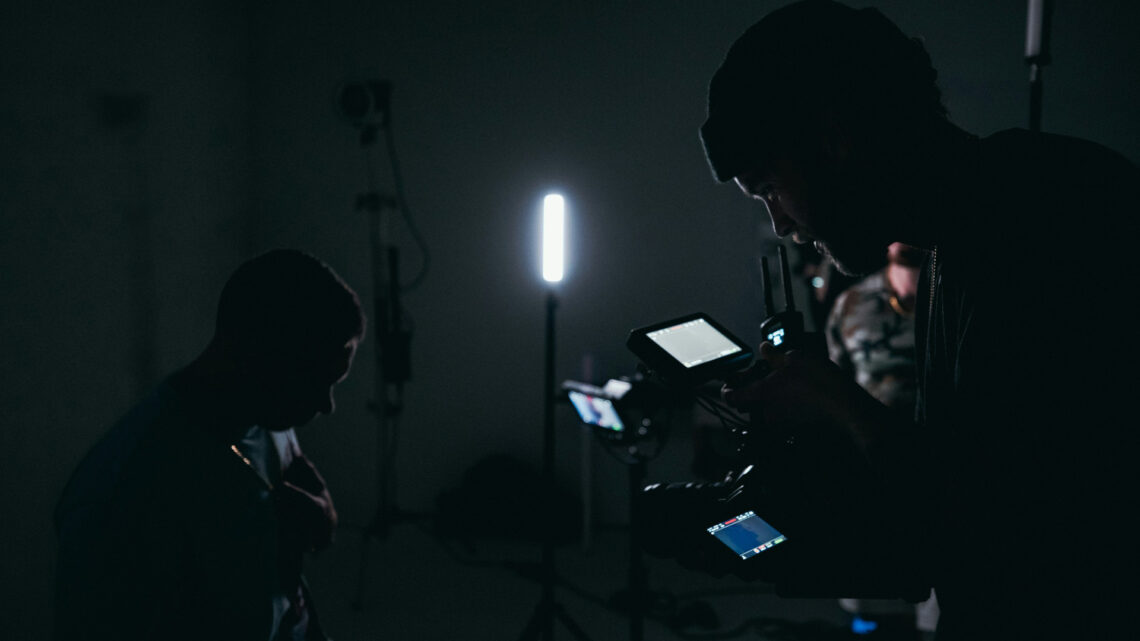No-budget productions hinge on the quality of your approach to coverage.
Many filmmakers make the mistake of focusing solely on coverage from a creative perspective, and neglect to understand its deeper purpose as a utility.
In its most basic form, coverage simply exists to give you options in the edit. Having even one angle of coverage (as opposed to just a master shot of your entire scene), opens up dozens of different ways to shape the edit.
It goes without saying that coverage can (and should) also be thought of from an artistic standpoint. But as I said above, most of us are already approaching it from that angle. What we usually need is to also consider the tactical implications of our choices. Both on set and in post.
With that in mind, here are 5 coverage methods that I recommend for no-budget productions. We explore these and more in my No-Budget Cinematography Blueprint.
The One-r
Before we get into the more complex coverage styles, we should first touch on single take coverage. AKA one-rs. AKA not using coverage at all.
While I generally recommend getting at least some coverage on every scene that you shoot, there is a time and place for everything. And sometimes capturing your scene in one long shot is what it needs.
This can be a particularly effective method when your scene is really short (under a page). Short scenes are more naturally energetic and don’t need to lean as much on standard coverage to keep them moving.
Longer scenes can work well as single shots too, but require a lot more blocking and rehearsal time to get right.
If you are working on a longer scene, framing your one-r as a medium shot or closeup will give you more ability to jump cut in post. Trying to do this with wide shots often just doesn’t work visually.
Master + Cutaway
I’m personally not a fan of the standard “film school” coverage for conversation scenes, which is usually a wide shot and two closeups. It’s boring from a creative perspective, but does offer great utility – which is why it is so widely used.
That said, I think a more interesting method is to simply shoot a master shot, and then a series of very purposeful cutaways of the environment.
The cutaways can be used to help you enter / exit the scene, splice takes together without having to jump cut, and create a more distinct tone.
You should still treat your master shot like it’s all you have – because you don’t want to use the cutaways as a crutch. But once in post, you will have lots of options to work with.
Cross Coverage
For dialogue scenes that need to be shot quickly, cross coverage is often a good option.
This is simply where you cover character A and character B in closeups, but don’t shoot a master. It’s a good option when you’re pressed for time on set, and shooting a simple dialogue scene without much movement.
That said, scenes that run longer than 2 pages may start to drag without an additional angle. So be sure to add some camera movement, go handheld, or change up the blocking to keep it interesting.
Floating Coverage
An alternate approach to the cross coverage method, is floating coverage. It is very similar in practice, but the camera is not locked onto any single character.
So rather than have 3 takes on Character A and 3 takes on Character B, you would shoot 6 “floating” takes of both of them.
Imagine the two characters sitting across from each other at a dinner table. The shot starts on Character A and as she finishes her line it drifts over to Character B.
This method can create some really interesting visual results in post. It is much less predictable than standard cross coverage though, and you have to be open to working with what you have in the edit. That said, it is one of the fastest coverage methods on this list.
The Scene Split
This is my personal favorite way to cover scenes lately.
Let’s picture a 4 page scene with 2 characters that are having a conversation in a living room. At the end of each page, one of the characters stands up and walks to another part of the room.
Standard coverage of this scene would be a wide shot, and closeups at each mark in the room. But this would be very time consuming, as it would require several 4 minute master takes, plus 8 coverage shots (2 x closeups per mark).
An easier method is what I call the “Scene Split”. In this scenario, it would involve breaking the scenes down into 1 page chunks. Each chunk would then be covered as a one-r, ending when the actor leaves their mark.
Doing this reduces the amount of coverage to just 4 shots (instead of 12), and relies more on on blocking and performance than editing.
Definitely a worthy option for longer scenes when you have limited time to shoot…
These topics are explored in far more depth in the No-Budget Cinematography Blueprint, which you can check out here.
For exclusive filmmaking articles every Sunday, sign up for my newsletter here!



No Comments